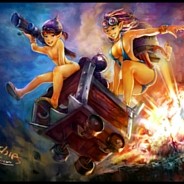Прочитайте и напишите по-английски план прочитанного текста Tula region.The Historical Background
Tula region, western Russia, with an area of 9,925 square miles (25,700 square km) is situated in the Central Russian Upland. The region 's rolling hills, which are much dissected by river valleys and erosion gullies, are covered by both fertile and poor soils, but the natural vegetation of mixed forest or forest-steppe has in large part been cleared for agriculture since the intensive settlement of the area in the 16th century. The climate is continental, with precipitation declining from 23 inches (575 mm) in the Northwest to 18.5 inches (470 mm) in the Southeast. The region's highly developed market gardening, grain cultivation (wheat and rye), dairying, livestock raising and sugar beet and potato growing.
Tula is the main city and administrative centre of Tula region. It lies along the Upa River, which is a tributary of the Oka River.
Tula is one of the ancient towns of our country; its history goes back to 1146. The first settlements of Tula were mentioned for the first time in Nikonovskaya chronicle (XVI-century) before 1147. Nobody remembers when Tula region was settled by one of Slav tribes -Vyatichi. Settled in our region, Vyatichi chose the high, steppe place on the river side. The signs of these places have remained up to nowadays. During the excavations the tools, bones of domestic animals, fish, grain were found. Thanks to these finds the scientists learnt that Vyatichi had agriculture, cattle, fusible iron and made axe, sickle and many other things. In 1611-1612 Tula citizens took part in the struggle against Poland invaders. In 1641 the first manufactures appeared. Nikita Demidov built iron plant. The whole families and even streets were engaged in making this or that part of the rifle. That is why many streets of Tula are still called after the parts of the rifle - Zamochnaya, Kurkovaya, Shtykovaya, Zavarnaya, Stvolnaya,
Lozhevaya etc. In 1712 following a decree issued by Peter the Great a state gun-making plant was founded in Tula. Tula became the famous centre of the iron production. The goods were spread all over the country. Among them there were masterpieces of amazing skill.
After the peasant's war 1773-1774 Tula was reorganised and decorated with new buildings. With the growing of population the cultural life began to develop. In 1777 the first theatre was opened, in 1784 - governments printing-house, in 1786 the main people vocation school. In 1830 the first public library was opened. Since 1838 the first newspaper was published.
Tula has long been notable in Russia for remarkable masters and the main armoury on the close approaches to Moscow. The city went down in the medieval history as a fortress on the most disturbing road to the Russian capital from steppes populated by conquering Mongol-Tartar hordes. Tula became the principal stronghold on the southern approaches to Moscow in the 16th century and the centre of a series of defensive lines against Tatar attack. In 1380 the host of Golden Horde was stopped and crashed at Kulikovo Pole (Tula region). In 1552 the Crimean khan Delved -Girei failed to capture Tula fortress as well as Napoleon in 1812.
In the dramatic days of 1941 Tula once again became a fortress. In 1941 Tula defenders were deterring the tank army of Guderian for 45 days making the enemy to fall back. It was the beginning of the glorious path to the victory in the World War II. Tula was honoured with the title of "Hero City". The destination to fight enemies and appropriate nature resources for metallurgical industry influenced the economic development of the city.
Since the 17th century, the area has been noted for its metallurgical industry, which has been joined in the 20th century by engineering and chemicals. A considerable amount of lignite (brown coal) has been mined there. During the 17th century, Tula developed into the major ironworking city of Russia. Here the first Russian arm factory was set up by Peter I. The first metal works and samovars factory also sprang up in Tula. Legends were made about Tula high-skilled craftsmen, armoires, smiths.
After the War Tula continued to grow and develop. Some settlements (Alyoshnya, Gorelki, Homyakovo) became the parts of Tula. In 1954 - 1955 Tula was gasificated. In 1964 the first trolley-bus was launched.
The culture of Tula reflects its history. The unique Museum of Arms on the territory of the Tula Kremlin is a symbol of the city. So is the Museum of Samovars with the riveting variety of the exhibits. Tula Regional Museum of Fine Arts comprises collection of Russian and European paintings and numerous works by folk crafts. The Kremlin Garden, the Belousovsky and Aleksandrovsky Parks, Theatres, the stadium with the oldest in Europe cycle track; architectural monuments contribute to the charm of Tula.
214
367
Ответы на вопрос:
Grow big and strong! be clever and kind! be intellegence and handsome!
Реши свою проблему, спроси otvet5GPT
-
Быстро
Мгновенный ответ на твой вопрос -
Точно
Бот обладает знаниями во всех сферах -
Бесплатно
Задай вопрос и получи ответ бесплатно

Популярно: Английский язык
-
Correct the mistakes where necessary. If no correction is needed,...
 maximkanariks21.12.2021 16:40
maximkanariks21.12.2021 16:40 -
Find the mistake and cross it out. Then type the correct word We/...
 alinkass31.01.2022 06:30
alinkass31.01.2022 06:30 -
Language focus 1 Past continuous: affirmative and negative 1 * Complete...
 dianabalaganska07.09.2022 13:50
dianabalaganska07.09.2022 13:50 -
Look. Then ask and answer. a car. (arive) blous 3 shop A: Does he...
 Ulugbek9i15.09.2022 20:13
Ulugbek9i15.09.2022 20:13 -
EXERCISE 8 PAGE 33, Put the verbs in brackets into the present perfect...
 66664219.12.2021 20:36
66664219.12.2021 20:36 -
Listen to the sentences. What are the stressed words? 1 This article...
 exm0r3d12.07.2022 11:17
exm0r3d12.07.2022 11:17 -
Use the words given in capitals to form a word that fits in the space...
 missvaleria226.02.2023 09:59
missvaleria226.02.2023 09:59 -
Survey questions 1. Are you a member of a youth group? 2. Do you play...
 АлисаЛостек250711.05.2021 08:53
АлисаЛостек250711.05.2021 08:53 -
Write an informal letter to your friend. Your sister comes from another...
 oksanakrasilnikova30.03.2022 08:40
oksanakrasilnikova30.03.2022 08:40 -
Дополни предложения глаголом из скобки и частицей up или down....
 Mashaf55526.08.2020 22:34
Mashaf55526.08.2020 22:34

Есть вопросы?
-
Как otvet5GPT работает?
otvet5GPT использует большую языковую модель вместе с базой данных GPT для обеспечения высококачественных образовательных результатов. otvet5GPT действует как доступный академический ресурс вне класса. -
Сколько это стоит?
Проект находиться на стадии тестирования и все услуги бесплатны. -
Могу ли я использовать otvet5GPT в школе?
Конечно! Нейросеть может помочь вам делать конспекты лекций, придумывать идеи в классе и многое другое! -
В чем отличия от ChatGPT?
otvet5GPT черпает академические источники из собственной базы данных и предназначен специально для студентов. otvet5GPT также адаптируется к вашему стилю письма, предоставляя ряд образовательных инструментов, предназначенных для улучшения обучения.
